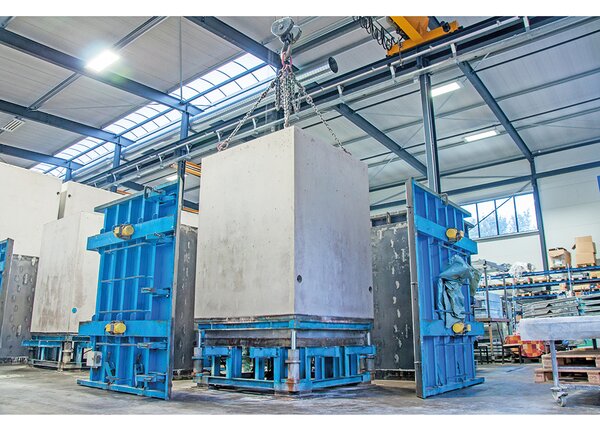Ecology
Villiger has set itself the goal of delivering massive reductions in CO2 emissions, whether by avoiding non-recyclable materials in production and in transport or in the use of our solutions by the customer.
Responsible supply chain

Villiger urges all suppliers to produce in the most sustainable way possible. Manufacturers of the precast concrete parts, for instance, obtain sand and gravel from certified gravel pits or from properly managed quarries in the surrounding region.
Saving transport and emissions
We have achieved weight savings on the concrete elements, which also leads to savings in travel and fuel, thus reducing CO2 emissions.
Responsibility

Eco-steel is a sustainable raw material. It is made by recycling the scrap produced by our consumer society, requires 70% less energy for its manufacture and emits 85% less CO2 than primary steel - that’s why we deliberately use eco-steel.
Discover the “9 Steps of Sustainability” (Source: ferrorecycling.ch/de/recycling/kreislauf/):
1. Shopping, cooking and enjoy
Mr. and Mrs. Swiss consume an average of around 40 food cans per year. Sheet steel packaging is both modern and practical.
Without the use of preservatives and without energy-consuming refrigeration, food can be stored in sheet steel packaging for a long time with a neutral taste and largely preserving the vitamins and nutritional value. The ideal storage in your kitchen cabinet or cellar!
2. Wash the sheet steel packaging in the last rinse water and remove the paper sleeve if necessary
Recycling sheet steel packaging makes ecological and economic sense. Recycling protects the environment. High-quality steel and tin can be recovered in this way.
Therefore, bring your empty tin cans to the collection point in your community. For hygienic reasons, only washed-out packaging should be deposited in the collection container. Before collection, the cans should be flattened. The flatter the packaging, the less volume and therefore more cost-effective and environmentally friendly the transport.
3. Collection
The food cans are collected in municipal collection points together with other packaging made of sheet steel. In some cases, the packaging is also collected together with aluminum packaging. Currently, about 86 percent of the sheet steel packaging sold in Switzerland is recycled.
4. Preparation of raw materials
In the nearest processing center, sheet steel packaging is separated from aluminum packaging by means of magnetic separators.
5. Detinning
The separated steel sheet fractions are then transported mostly by rail to the Elektrozinn AG detinning plant in Oberrüti (CH) for further processing. Here, steel and tin are separated from each other by means of electrolysis.
6. Tin
The separated tin is now pressed or melted down and can be used again as a new raw material in manufacturing (mainly soldering and electrical engineering).
7. Melting plant
After a washing process, detinned sheet steel packaging still contains a negligible 0.04 % tin. This is followed by transport to the smelting plant.
8. Casting
The molten steel is cast into billets and further processed, for example, in the rolling mill.
9. Secondary raw materials
The recovered steel is used, for example, in the production of frying pans, piping, automotive sheet, tools, wires and nails. Some of the recovered steel is also found again in sheet steel packaging.
about Villiger
Motivation, passion and engagement are what makes us who we are. One thing is certain: your succcess is what drives us each and every day!